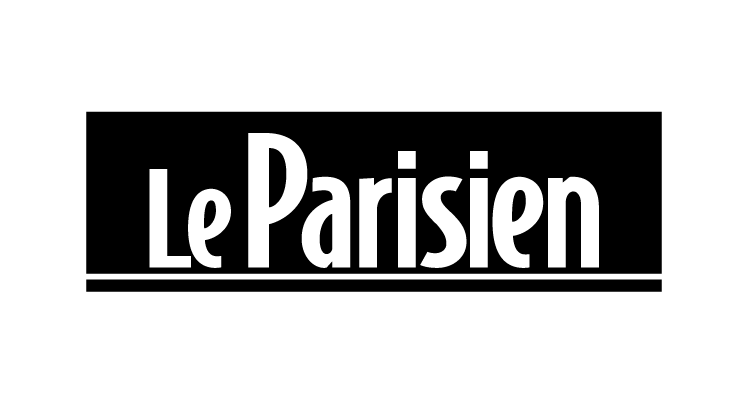Artwork of Paul Signac
A key painter of the Neo-Impressionist movement, Paul Signac revolutionised the arts at the end of the 19th century, giving new impetus to oil on canvas and watercolour, thanks to the development of pointillism and divisionism with the help of his friend George Seurat. A veritable bridge between the Impressionist painting carried by Monet, and the Neo-Impressionist work represented by Fauvism, Pointillism and all the currents using pure colour, Paul Signac has been a source of inspiration for many painters, right up to the present day with modern and abstract painting.
From his career in Paris to his travels in Saint-Tropez, via Marseille, La Rochelle, Venice and Antibes, discover the work of Paul Signac, with "Woman with a parasol" (1893 - Musée d'Orsay, Paris), an oil on canvas representative of his research into pointillism, the watercolour "Sunny houses on the port of Saint-Tropez" (1895 - Musée d'Orsay, Paris), a view of Saint-Tropez, the artist's home town, differing from Divisionism, the canvas "Notre-Dame-de-la-Garde, La Bonne-Mère, Marseille" (1906 - Metropolitan Museum of Art, New York), one of his many oil paintings depicting the city of Marseille, or his painting "Antibes (étude)" (1918), a watercolour finding inspiration in the reflections of the Mediterranean.
Offer yourself a reproduction of a painting by Paul Signac available in the catalogue, the key French neo-impressionist painter of the late 19th and early 20th centuries, and find out more about his biography.
Biography of Paul Signac
Youth and training of Paul Signac
Rising from a middle-class family in Asnières, Paul Signac was born on 11 November 1863 in Paris. His passion for art led him to visit the Impressionist exhibition of 1879, during which, aged 16, he decided to become a painter, falling in admiration of the paintings of Caillebotte, Degas, Monet and Pissarro.
Although destined to become an architect, but encouraged by his family, he stopped studying in 1880, and began taking drawing lessons at the age of 17. Moving to Montmartre, he studied under the famous academic painter Émile Bin. His early works already revealed a personal style and mastery of drawing technique, and although Bin's influence was important in his training, and helped him develop his technique in classical art, Signac soon felt the need to move away from academic conventions and explore new artistic avenues.
This was a pivotal period for Paul Signac, who met many of the Impressionist painters, but also artists from the avant-garde of the late 19th century. It was during this period that he befriended the Symbolists, Father Tangy, a key figure in the development of Impressionism, and also Monet, with whom he remained close throughout the latter's life. All these encounters thus influenced Signac's painting during his formative period, and Impressionism became a real inspiration for many of his canvases.
Paul Signac: The Development of Pointillism
In 1884, Paul Signac took part in the first Salon des Indépendants. He exhibited two canvases, Le Soleil au pont d'Austerlitz and L'Hirondelle au Pont-Royal, alongside other renowned painters who would form the future of French and European painting in the late 19th and early 20th centuries, such as Odilon Redon, Henri-Edmond Cross, Charles Angrand, but above all Georges Seurat, who would become a true companion in the search for a new way of painting. With George Seurat, he developed a close friendship and artistic collaboration. Working alongside him, he developed a technique of applying distinct strokes of colour to create an overall image. Inspired by the scientific theories of the time on colour perception, he produced paintings using small touches of pure colour, which he placed side by side on the canvas. These coloured touches blended in the viewer's eye, creating an impression of luminosity and movement. Giving birth to pointillism, the two French painters became the main proponents of this technique, which they used throughout their careers.
This technique quickly became Signac's trademark, and in 1886 he was even invited by Camille Pissarro, to exhibit at the eighth Impressionist exhibition. It was at this exhibition that the art critic Félix Fénéon described Signac's paintings as "neo-impressionist".
Travel as an influence for Paul Signac
Alongside his artistic research, Signac fed his inspiration through his travels. The French painter had a particular love of coastal towns, which offered him an inexhaustible source of inspiration. Among his favourite destinations, Paul Signac regularly visited Antibes, Venice and Marseille, where he painted several pictures. The brilliant hues of the Mediterranean, the reflections of the sun on the water, the play of light on the facades of the houses and the shapes of the boats were an inexhaustible source of inspiration for Signac, whose technique playing with pure colours accurately captured the details of these maritime scenes.
In 1892, Paul Signac settled in Saint-Tropez, in the south of France, whose maritime landscapes had a profound effect on the artist, who from then on produced numerous paintings depicting ports and maritime views. These journeys and his move to the Mediterranean were also an opportunity for Signac to capture the immediacy of visual impressions using pure strokes of colour, in paintings in which he succeeded in capturing the beauty of nature and the fleetingness of moments. His canvases thus express an atmosphere of lightness and joy, in which colour and light play a central role.
The end of Paul Signac's career and his switch to watercolour
Well settled in Saint-Tropez, Paul Signac never stopped working and producing works of great artistic finesse. He continued to explore new techniques and experiment with colours, always seeking to capture the light and nuances of the nature around him. His paintings, imbued with poetry and modernity, bear witness to his inexhaustible talent and his major contribution to the art of pointillism.
It was from 1894 that Paul Signac began a period of artistic transition towards watercolour. Known for his pointillist oil paintings, Signac from then on explored watercolour with unbridled curiosity and passion, going so far as to exhibit several canvases done in this medium at the Salon des XX in Brussels. Responding to commissions from collectors, Signac became a committed watercolourist, particularly from 1900 until the end of his life. This led to the production of a whole series of watercolours between 1929 and 1931, in which the painter travelled from port to port, producing over a hundred landscape paintings with views of Marseille, Saint-Tropez, Antibes, La Rochelle, Venice and Le Havre, among other French and European coastal towns. Ill, but painting until the last day, Paul Signac died in 1935 of a long illness.
Paul Signac: A strong legacy from a real commitment to the arts
As a founding member of the Société des Artistes Indépendants, Paul Signac played a key role in promoting modern and independent art. Founded in 1884, the Société des Artistes Indépendants consisted of a group of painters, draughtsmen and sculptors who rejected the constraints imposed by traditional artistic institutions. Signac was one of the first members of this society and actively participated in its annual exhibitions. He was a firm believer in artistic freedom and the need to give all artists the opportunity to show their work without judgement or prior selection.
In addition to his commitment to the Société des Artistes Indépendants, Signac also played a major role in promoting modern art. A fervent advocate of the use of pure colour and the technique of pointillism, Signac used the technique in his own work, but he also encouraged other painters to adopt or be inspired by it by writing articles and giving lectures on the subject, helping to popularise pointillism and influence many contemporary painters, paving the way for fauvism or even abstract art.
Signac's influence on contemporary art inspired many artists to explore new techniques and push the boundaries of art. Painters such as Georges Seurat, Henri-Edmond Cross and Maximilien Luce, Vincent Van Gogh, André Derain and Henri Matisse were all influenced by Signac's ideas and techniques. As proof of his great contribution to the art world, many museums around the world still exhibit his works today, including the Musée d'Orsay in Paris, the Metropolitan Museum of Art in New York, and the Musée de l'Annonciade in Saint-Tropez.
Paul Signac's life in brief
Paul Signac's life was marked by his unwavering passion for painting and his commitment to the Pointillist movement. His paintings, characterised by the use of small strokes of colour, revolutionised the art of his time. Over the course of his career, Signac created many masterpieces that made their mark on the art world. Signac also excelled in the field of drawing, producing watercolours of great finesse. He was meticulous in the production of his canvases, using quality paper and having a precise pencil stroke, whether making an oil painting on canvas, a watercolour or a drawing for a preliminary study.
Signac drew his inspiration from waterscapes, from the Seine near Samois ("La Seine à Samois (étude)" - 1899) or Asnière-sur-Seine ("Le pont d'Asnières" - 1900), when he lived in the Île-de-France region, to seascapes depicting the major ports of France, from La Rochelle ("Entrée du port de la Rochelle" - 1921, Musée d'Orsay) to Saint-Tropez ("La bouée rouge, Saint-Tropez" - 1895, Musée d'Orsay), via Antibes ("Antibes" in fountain pen on paper, Musée d'Orsay) or Marseille ("View of the port of Marseille"- 1905, Metropolitan Museum of Art, New York), capturing sunlight with remarkable precision, thanks to his involvement in the Divisionist movement.
His growing renown has led to his work being exhibited to this day in renowned institutions such as the Metropolitan Museum of Art in New York, the Natural History Museum in La Rochelle, the Orsay Museum and the Van Gogh Museum in Amsterdam, among many others. His contribution to modern art remains undeniable, making him one of the great masters of twentieth-century painting.
Learn more about the life and the works of Paul Signac.
















































































































































